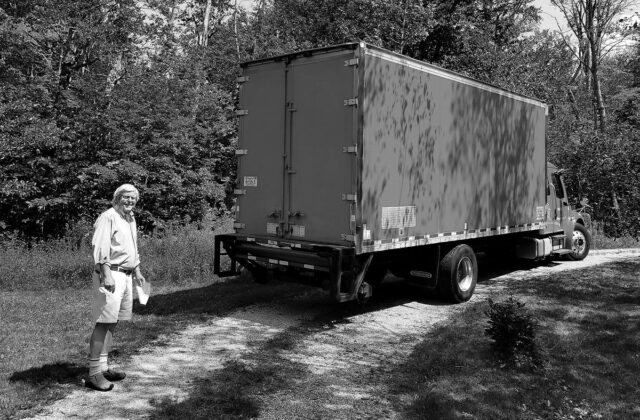Photographer Christopher Little Gives It All Away
Text by Steve Melville
Photo by Kate Campion
This summer Christopher Little packed up his entire photographic archive and shipped it to the Briscoe Center for American History at the University of Texas in Austin. There it will form part of the Briscoe’s expansive holdings in photojournalism from the mid-19th century on, joining the work of many other photographers, including Pulitzer Prize winners Eddie Adams, Lucian Perkins, Steven R. Nickerson and Carolyn Cole, as well as Norfolk resident, and Little’s neighbor and People magazine colleague, the late Enrico Ferorelli. The Briscoe archive includes the work of many of Little’s friends and colleagues and is one of the primary places the Photography Collections Preservation Project, which acted as a crucial intermediary, hopes to place collections.
Little’s childhood hobby became a profession when, as a high school student, he got an internship with the New York Herald Tribune, to which he subsequently sold his first published photograph, of a fishing contest for kids. Later, as an undergraduate at Yale, he covered the Black Panther trial in New Haven for Newsweek. He continued to work, particularly with Time Life, throughout a photographic era belonging to a world that, he says, just doesn’t exist anymore. He recalls the early days of People magazine with particular fondness.
Throughout his career, Little always worked as a freelance photographer, maintaining his copyrights and frequently taking on additional projects, including a sustained period working for the Aga Khan Award for Architecture (this work is separately archived at MIT); another as David Letterman’s exclusive photographer, involving over 300 magazine covers; and numerous projects sailing and traveling with William F. Buckley Jr., with whom Little published three of his 13 books. Although the center of his interests has always been people and sharing in their lives, Little also established a considerable reputation as an architectural photographer along the way.
The materials sent to Texas filled 50 substantial cartons and included more than 371,000 images and a 145-page catalog detailing dates, subjects, captions and other information. Little admits he was repeatedly tempted to cull his files, but the Briscoe was emphatic that it wanted everything—negatives, slides, work prints, contact sheets, correspondence and other ephemera (such as a handwritten note from George H. W. Bush on Kennebunkport stationery).
Going through all this material—there were 83 filing cabinets in Little’s basement—was not always easy. The process took four months of pretty sustained work, with considerable local assistance from Mattie Vandiver and Kate Campion. He scanned about 1,100 images to keep, but in the end still found himself more than a bit conflicted as the truck pulled away. After all, it was, as he says, “his babies” he was sending away.
But he also found it interesting to reencounter those babies as grown-ups. Inevitably, forgotten photographs were abruptly recalled, such as a series of photographs of Jacqueline Onassis he’d completely forgotten he’d taken. There was also a photo of a girl group signed, “To Eliza [Little’s daughter], Love ‘The Taffetas’”—a group and a show that Little is not alone in having forgotten. It was interesting, as well, to discover how his judgments of which photographs were better or worse had shifted, or to find himself considering how he might edit some pictures differently than a past editor had (although he says he was well served by his various editors, and that “they usually did a pretty damn good job”).
Little is far from done taking pictures, and many Norfolk residents will have seen his recent shows at Infinity Hall and the Norfolk Library of his friends and neighbors reimagined as the subjects of the glamorous conventions of 1930s and 1940s Hollywood photography. If he entered the world of photography at a moment when the formality of the large-format Speed Graphic camera was giving way to the street photography of the 35-millimeter Leica (Little was a Leica guy), he has now fully embraced the transition from film to digital photography. Although his book on Frank Lloyd Wright’s house, Fallingwater, is the only professional project he has done digitally, Little says now he would have loved to have had that technology in the past, contrasting the hours of work that once went into producing a picture from a 20-minute photo op with the President with its digital equivalent: “Just glance at the screen and you’re good to go!” He thoroughly expects an iPhone photo to win the Pulitzer Prize within the next couple of years and cites images of Minneapolis police officer Derek Chauvin kneeling on the neck of George Floyd as an example.
He’d love to do another serious book but has as yet nothing particular in mind. In the meantime, he’s enjoying the mixed message he got from one of his former editors when the Briscoe said it wanted his archive: “Congratulations! That’s where great photojournalists go to die.”

